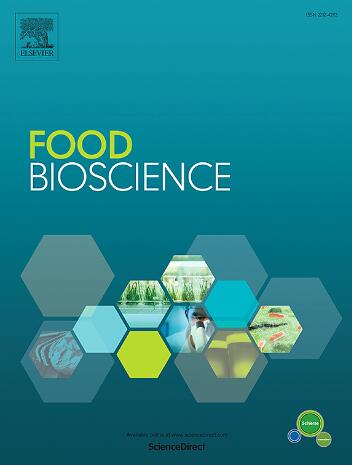Cow’s milk protein allergy: Biochemical and immunological aspects and biotechnological strategies for hypoallergenic dairy production
IF 5.9
1区 农林科学
Q1 FOOD SCIENCE & TECHNOLOGY
引用次数: 0
Abstract
Cow's milk protein allergy primarily affects children and represents a significant challenge for food safety. This study provides a comprehensive review of the biochemical and immunological aspects of milk proteins involved in CMPA and explores biotechnological strategies for developing hypoallergenic dairy products. The structural characteristics of caseins and whey proteins, their interaction with the immune system, and their role in allergic reactions are analyzed. Additionally, biotechnological approaches, including enzymatic hydrolysis, bacterial fermentation, and genetic editing, were evaluated as methods to reduce the antigenicity of milk proteins while preserving their nutritional value. Bioinformatics tools have also been applied for enzyme selection and the prediction of allergenic epitope reduction. The findings indicate that enzymatic hydrolysis and fermentation significantly decrease milk protein antigenicity, enhancing safety for allergic individuals. Furthermore, genetic editing of cattle has enabled the production of β-lactoglobulin-free milk, reducing its immunoreactivity. Despite these advances, challenges remain, such as consumer acceptance of genetically modified products and the need for regulatory frameworks. Additionally, ensuring the economic accessibility of hypoallergenic dairy products is crucial for reaching vulnerable populations. The integration of biotechnology, food science, and a deeper understanding of the biochemical and immunological properties of milk proteins is essential for developing innovative solutions to mitigate cow's milk protein allergy, promoting food safety and a better quality of life for affected individuals.

牛奶蛋白过敏:低过敏性乳制品生产的生化和免疫学方面和生物技术策略
牛奶蛋白过敏主要影响儿童,对食品安全构成重大挑战。本研究对CMPA中乳蛋白的生化和免疫学方面进行了全面的综述,并探讨了开发低过敏性乳制品的生物技术策略。分析了酪蛋白和乳清蛋白的结构特征、它们与免疫系统的相互作用以及它们在过敏反应中的作用。此外,生物技术方法,包括酶水解、细菌发酵和基因编辑,被评估为降低牛奶蛋白抗原性同时保持其营养价值的方法。生物信息学工具也被应用于酶的选择和过敏原表位减少的预测。结果表明,酶解和发酵可显著降低牛奶蛋白的抗原性,提高过敏个体的安全性。此外,牛的基因编辑使生产不含β-乳球蛋白的牛奶成为可能,从而降低了其免疫反应性。尽管取得了这些进展,但挑战仍然存在,例如消费者对转基因产品的接受程度以及需要建立监管框架。此外,确保低过敏性乳制品的经济可及性对于接触弱势群体至关重要。生物技术与食品科学的结合,以及对牛奶蛋白的生化和免疫学特性的深入了解,对于开发创新的解决方案以减轻牛奶蛋白过敏、促进食品安全和改善受影响个体的生活质量至关重要。
本文章由计算机程序翻译,如有差异,请以英文原文为准。
求助全文
约1分钟内获得全文
求助全文
来源期刊

Food Bioscience
Biochemistry, Genetics and Molecular Biology-Biochemistry
CiteScore
6.40
自引率
5.80%
发文量
671
审稿时长
27 days
期刊介绍:
Food Bioscience is a peer-reviewed journal that aims to provide a forum for recent developments in the field of bio-related food research. The journal focuses on both fundamental and applied research worldwide, with special attention to ethnic and cultural aspects of food bioresearch.
 求助内容:
求助内容: 应助结果提醒方式:
应助结果提醒方式:


